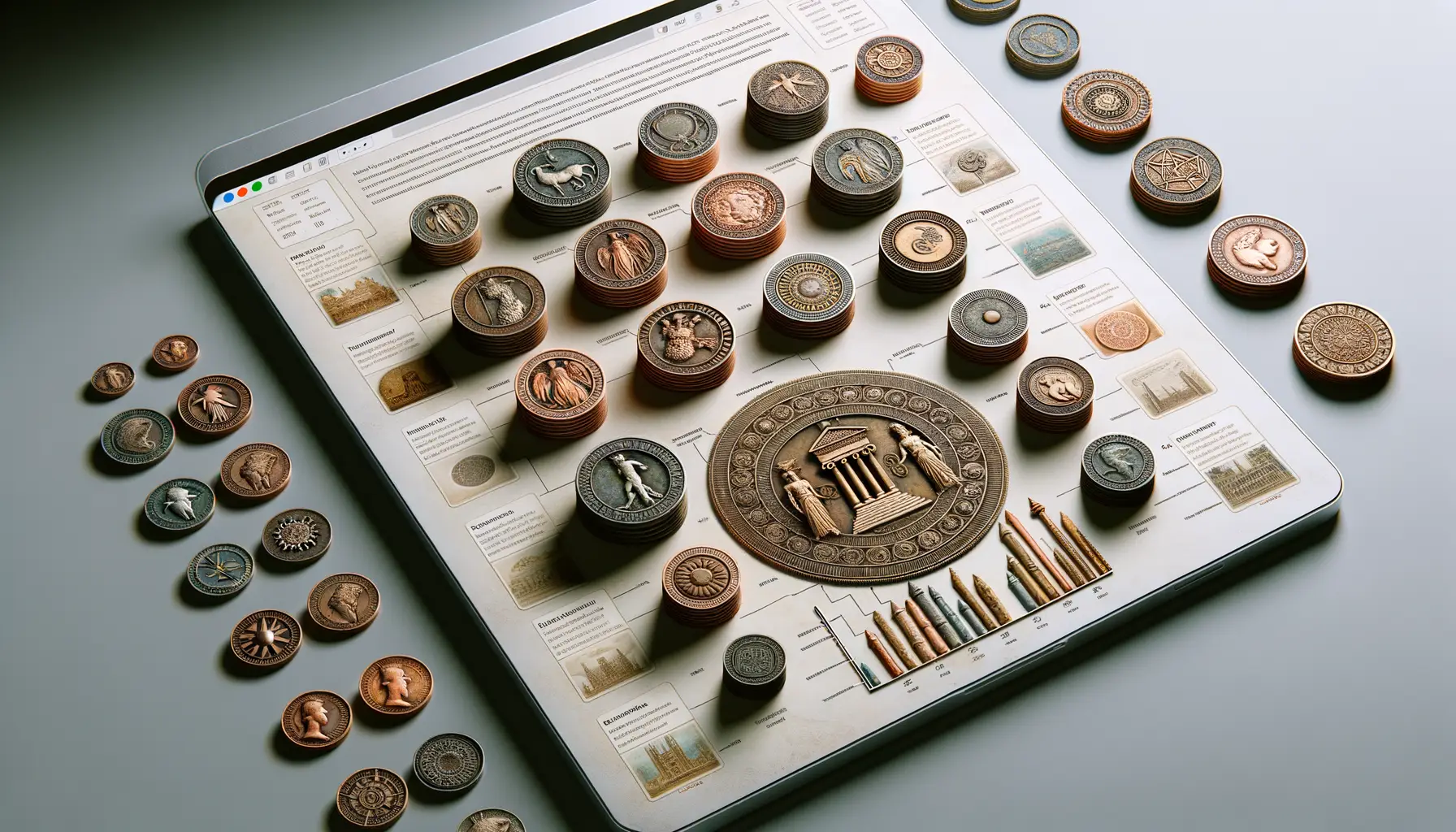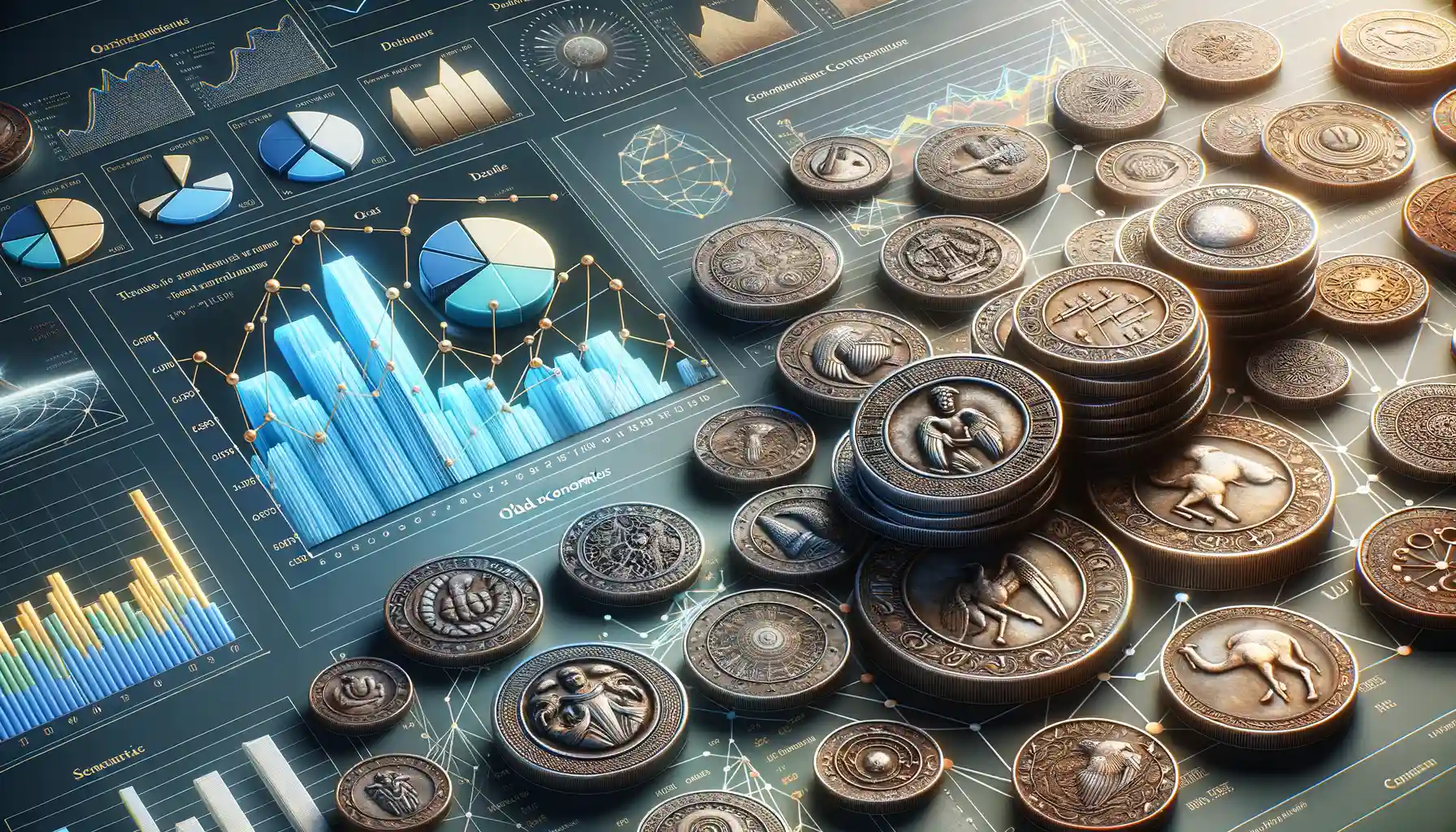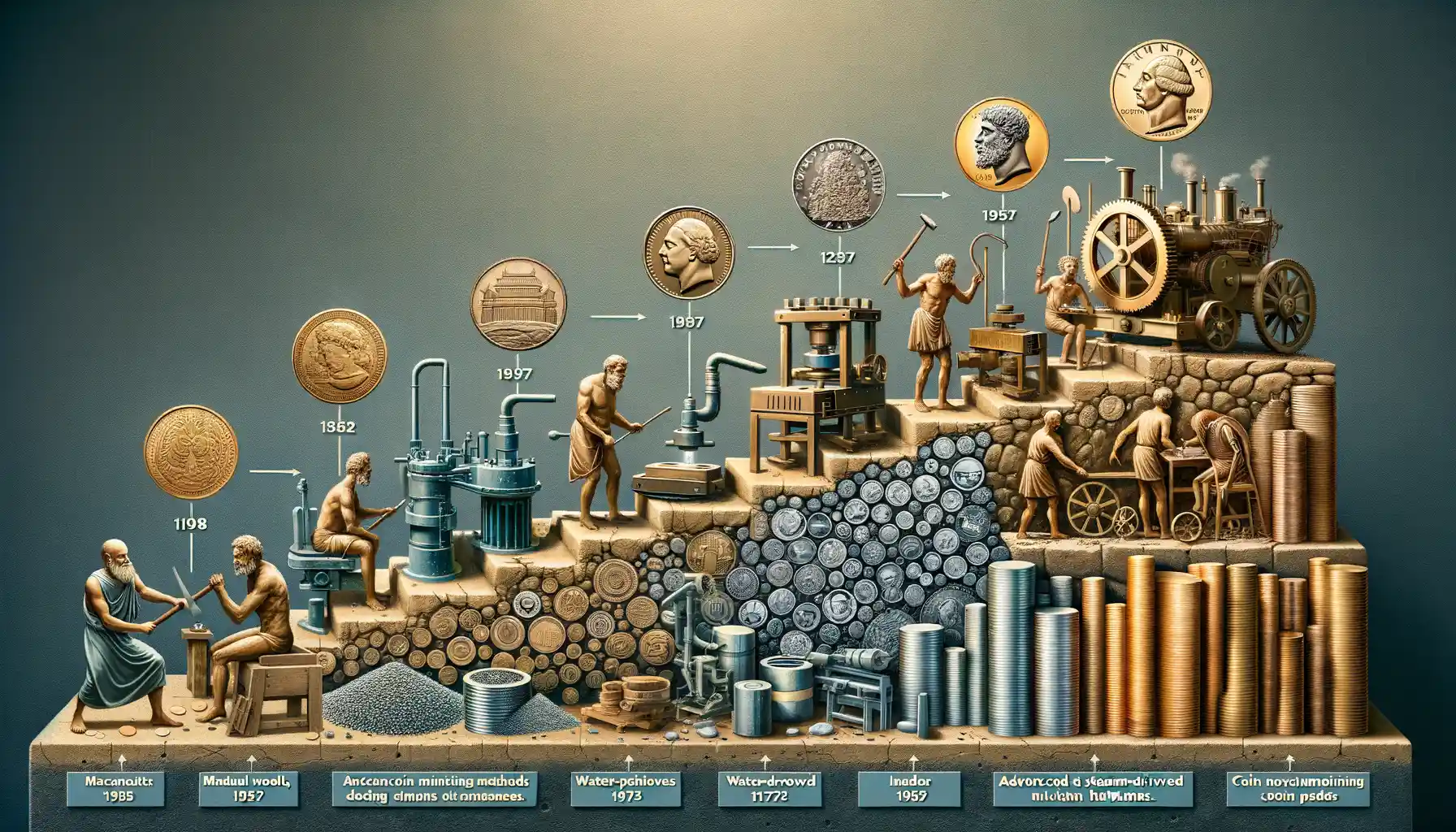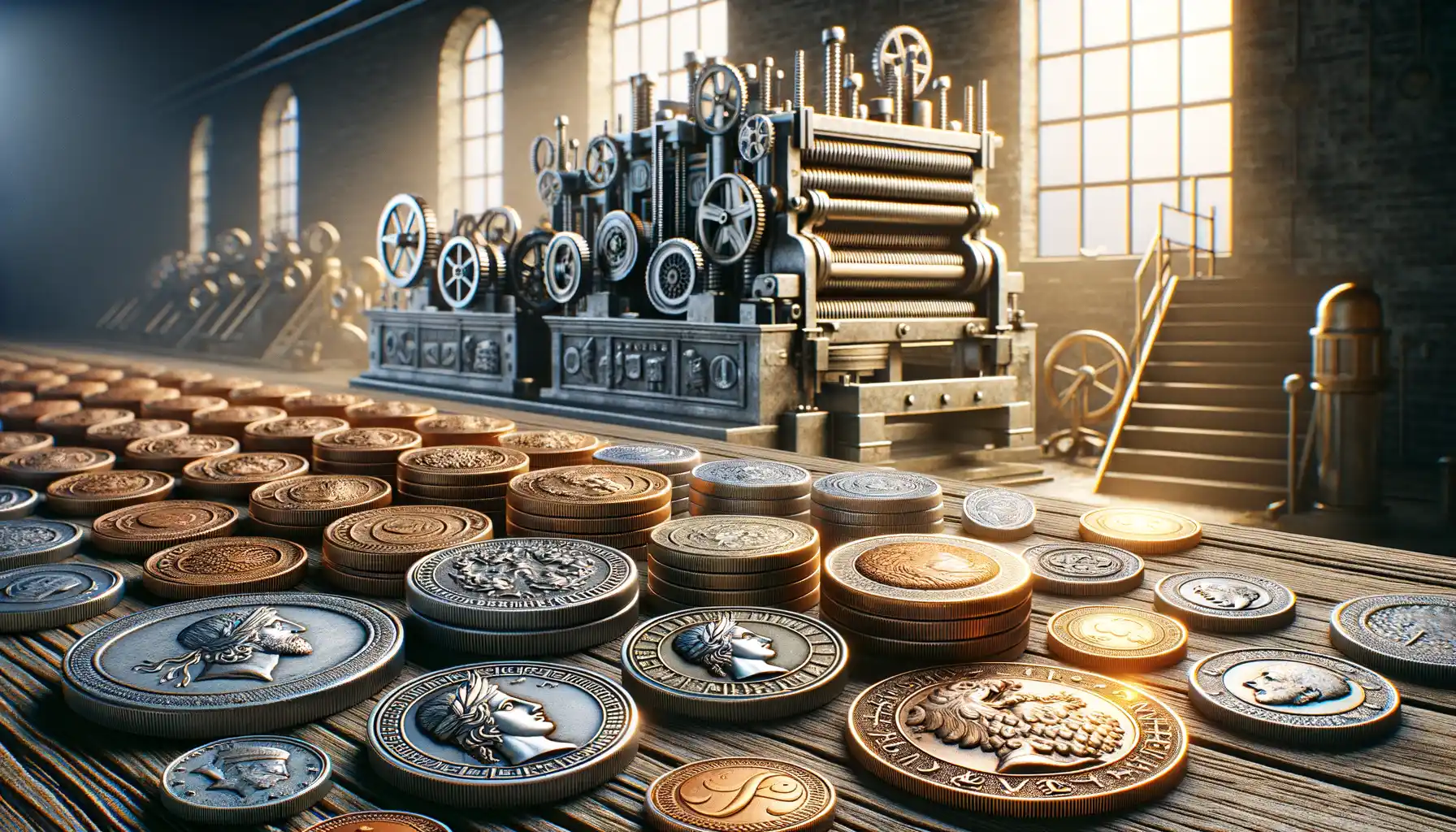The Historical Role of Ancient Coins
Ancient Coins as Storytellers of Civilization
What if every coin you held in your hand whispered a story from thousands of years ago? That’s exactly what ancient coins represent—not mere currency, but living chronicles of human ambition, innovation, and identity. These small, often overlooked artifacts were the lifeblood of empires, silently circulating ideas alongside goods.
Imagine a silver Athenian tetradrachm emblazoned with the fierce owl of Athena. Its image wasn’t just decorative; it declared Athens’ dominance in trade and intellect to whoever touched it. Or think of the Roman denarius, a tool that united a vast empire under one economic system, its inscriptions shouting loyalty to emperors like Julius Caesar. These coins served purposes far beyond commerce—they cemented political power, spread propaganda, and even celebrated technological leaps in metallurgy.
- Power: Coins announced the might of rulers and empires, showing intricate portraits of leaders.
- Artistry: They carried designs brimming with symbolism, from olive branches to celestial animals.
- Communication: In a world without phones or internet, coins acted as pocket-sized messengers.
Every Coin Was a Cultural Mirror
Holding an ancient coin is like peering into a time capsule. The materials reveal trade networks—Greek coins minted from Spanish silver, for instance, hint at expansive trade routes. Their designs unveil values: the wheat stalks on early agrarian coins spoke to societies rooted in farming, while military-themed depictions reflected eras of conquest.
When you picture these coins passing through the hands of merchants, farmers, and soldiers, you see humanity itself threaded together by these tiny yet mighty objects. Truly, they were more than coinage—they were cultural mirrors, reflecting the pulse of their eras with every detail engraved.
Design Elements of Ancient Coins and Their Modern Relevance

Symbols and Stories Carved in Metal
Ancient coins were more than just a medium of exchange – they were tiny, portable works of art. Imagine holding history in the palm of your hand, where each coin tells a unique story. From the fierce gaze of Alexander the Great embossed on Greek drachmas to the intricate floral patterns of Indian punch-marked coins, these designs weren’t just decorative. They were statements of power, faith, and culture.
Rulers proudly stamped their likenesses on coins to cement their legacy, while mythological figures honored the gods believed to protect nations. For instance, Roman denarii often depicted gods like Jupiter or Mercury, suggesting divine approval of the empire’s rule. Even today, modern currency channels this ancient elegance: the heads of presidents, national symbols like eagles, and intricate engravings owe much to those early influences.
- The laurel wreath? A Roman nod to victory and honor.
- The crowned eagle? Its roots lie deep in ancient heraldry.
- Even minimalist designs echo ancient simplicity – bold and unforgettable.
Ancient Aesthetics Meet Modern Precision
What’s striking is how ancient design principles live on in today’s coinage. Back then, craftsmen etched every detail by hand, pouring heart and soul into every strike of the die. Now, we use lasers and digital modeling, but the essence remains the same: balance, symmetry, and beauty.
Take the UK’s pound coin. Its 12-sided shape? A touch of modern functionality, but its decorated edges and royal insignias feel straight out of antiquity. Then there’s the euro, a masterclass in combining modern unity with historical nods to Europe’s rich past. Coins, just like in ancient times, still blend aesthetics with authority – beauty you can literally hold.
Economic Insights Gained from Ancient Coinage

What Ancient Coins Reveal About Trade and Market Growth
Imagine holding an ancient coin in your hand, tracing the worn edges etched with symbols of a lost empire. It’s not just a relic—it’s an economic story frozen in metal. These coins acted as barometers of wealth, trade routes, and even political power, revealing how societies thrived (or fell apart) financially.
Take for instance, Roman denarii. These silver coins often reflected the ebb and flow of military campaigns. When Rome expanded its borders, its coins traveled with it, spreading a unified monetary system that fueled trade networks across Europe and beyond. But debasement—when precious metals were diluted to stretch supplies—offers clues on economic stress, like inflation or dwindling resources.
- Greek drachmas: Symbols of bustling city-states trading ceramics, olive oil, and weapons.
- Chinese spade money: Proof of early standardized systems centering on agricultural exchange.
These coins weren’t just tools—they were economic lifelines. Where a coin traveled often marked where goods, skills, and ideas flowed too. Ancient markets were intertwined, much like today’s stock exchanges, except instead of algorithms, there were camels, ships, and silk.
Technological Advancements in Coin Production from Antiquity to Now

From Hammered Ingenuity to Precision Engineering
Imagine holding an ancient coin, its uneven edges and slightly off-center design telling a story of manual labor and rudimentary tools. In antiquity, coins were made by hand: a craftsman would place a blank metal disc between two engraved dies and strike it with a hammer. Each coin was unique—like snowflakes of the ancient world—but also prone to irregularities.
Fast forward to today, and coin production is a dazzling dance of precision and technology. Thanks to machines that can mint thousands of coins per minute, modern currency achieves uniformity so perfect that it feels almost clinical compared to its ancient predecessors. Consider how hydraulic presses, laser engraving, and computer-aided designs have redefined what’s possible. The transformation is nothing short of extraordinary.
- Ancient methods: Hammer striking, casting in molds, engraving by hand.
- Modern innovations: Multi-metal alloys, anti-counterfeit technology, and automated quality checks.
What’s fascinating is how some ancient techniques still inspire modern advancements. For instance, the intricate designs hammered into ancient coins resonate in today’s commemorative pieces, blending history with technological finesse. Isn’t it wild how even the simplest acts of yesteryear echo in our high-tech present?
The Legacy of Ancient Coins in Contemporary Numismatics

Whispers of Antiquity in Modern Collecting
The world of contemporary numismatics owes a profound debt to the ancient coins that first sparked humanity’s fascination with metal currency. The allure of these historic pieces goes beyond their monetary value—holding one is like cradling a fragment of history in your palm. Imagine owning a coin minted over 2,000 years ago, imbued with the stories of empires, revolutions, and the hands that once exchanged them. It’s no wonder modern collectors feel a magnetic pull toward these relics.
For today’s hobbyists, ancient coins inspire not only admiration but also a sense of connection to the past. These coins serve as blueprints for understanding the evolution of currency while fueling an ongoing passion for discovery. And let’s be honest—there’s nothing quite like the thrill of uncovering a Roman denarius or a Greek drachma at an auction, its weathered surface whispering secrets of trade routes and lost civilizations.
- Educational Impact: Ancient coins invite deeper study into history, from the reign of Alexander the Great to the triumphs of Julius Caesar.
- Aesthetic Influence: Their intricate designs often spark trends in modern coinage styling.
